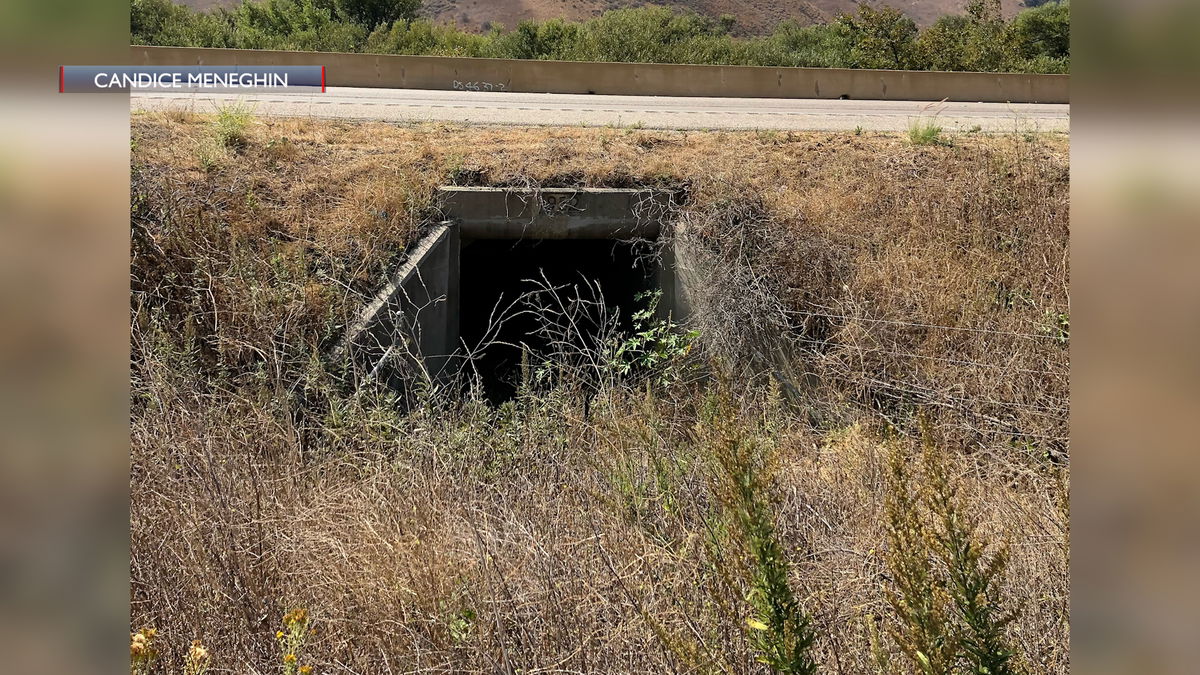Improvements planned for Gaviota wildlife crossing
SANTA BARBARA COUNTY, Calif. - Just past the entrance to Gaviota State Park on Highway 101, there is a culvert that is planned to be improved to allow larger animals to cross underneath the highway.
The culvert was originally built to move cattle across the highway when it became four lanes. A photo of the culvert shows "1952" etched across the top.

"It's undersized for black bears, Mule deer, and mountain lions. So those big animals aren't using that under crossing in its current state because it's too small," said Candice Meneghin, Executive Director of Coastal Ranches Conservancy.
Caltrans is completing the planning phase of what will be a $10 million investment in improving the wildlife passage.
The Gaviota Pass Wildlife Connectivity and Vehicle Collision Reduction Project will expand the existing culvert and it will also involve installing fencing to further encourage wildlife to use the crossing.
"We know that at least hundreds of animals are involved in vehicle collisions in this region every single year, which is dangerous for drivers and deadly for wildlife. Investments in wildlife passage both save money and play a critical role in protecting wildlife," said Meneghin.
In 2017, The Coastal Ranches Conservancy, which protects a large amount of land along the Gaviota Coast, commissioned a report from UCSB to better understand how to improve wildlife connectivity in the area.
The study showed 300-700 animals have been killed in highway-related incidents.

The study also highlighted the area near Mariposa Reina, near the rest areas and the tunnel, and near the Gaviota Peak Trailhead where Highway 1 merges with Highway 101 as the three locations with the highest density of roadkills along the Highway 101 Gaviota corridor.
Funds for the project were part of a nationwide Wildlife Crossings Pilot Program funded through the 2021 Bipartisan Infrastructure Law. This project was the only such crossing funded in California in 2023.
The Coastal Ranches Conservancy is also looking into helping steelhead trout, a federally recognized endangered species, through the use of fish passageways according to Meneghin.
“The key to protecting healthy populations of native fish and wildlife in California is connected habitat,” added Meneghin. “Investing in wildlife crossings is, therefore, some of the best money we could spend to help secure a sustainable and resilient future both within and beyond Santa Barbara County.”
Over the weekend, the National Wildlife Federation's "Wildlife Crossing Across America" road trip made a stop near the culvert.
The trip started on Aug. 19 near the California/Nevada border and ended at a wildlife crossing in Mammoth Lakes, California.
The trip is intended to call attention to the benefits designated wildlife crossings provide for both people and wildlife.
The Gaviota Wildlife Crossing project is also in line with Governor Gavin Newsom's 30 x 30 plan to conserve 30 percent of California's lands and coastal waters by 2023.
Public meetings for the Gaviota wildlife crossing are set to be held this fall.
Meneghin said more details on future meetings about this project will be posted on the Caltrans website.
